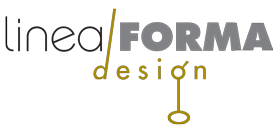The client can usually identify a problem, but do they always know the best solution?
We each have our area of expertise. Mine happens to be visual storytelling: creating the best presentation to convey information quickly and easily in an entertaining manner.
How the design process unfolds is different for every project, but the most important step is to listen to the client explain the problem as they see it. Then I evaluate it, considering the client’s perceived solution as well as developing several of my own, review them with the client, reach agreement on the direction, and proceed with the design, keeping the client in the loop at all crucial steps of the process. In all cases, to have a great working relationship, the designer must respect the client’s knowledge of their industry, product and environs. The client must respect the designer’s expertise in the design arena. It is bringing both areas of expertise together effectively that results in the best design solutions.
Here is a great example:
Columbia River Carbonates (CRC), in Woodland, WA produces different grades of ground limestone products for many commercial industries and loads it into pneumatic tanker trucks at their facility. Since the product is sold by bulk weight, the customer’s truck is weighed on their huge scales when it arrives, and then again after it is loaded. Truck drivers perform several moves to align their trucks properly on the scale, as well as under the overhead hoppers that dispense the powdered products into their single or tandem tanker trailers.
CRC contacted me to create illustrations for a digital kiosk they were installing to guide incoming truck drivers through their tasks in the weighing and loading processes. We met at their facility, I talked with the programmer and several engineers, listened to their suggestions for a solution, watched actual trucks perform their loading operations and took photos.
With any infographics, the imagery must tell the story clearly and concisely, with all extraneous, and potentially confusing details removed. The CRC loading facility is huge, enclosed and extremely dusty, not the best place for a camera, and with way too many distracting elements in the picture. So I presented CRC with two design options: use technical illustrations of truck side views in the correct positions on the scales (as they originally requested); or create low detail 3D models of a pneumatic tanker truck and of their scale/loading building, then, make short, animated close-up movie clips showing each process in action up close. They picked the model option! They liked the added clarity. Smart client!
I found side views online of various trucks and trailers, built simple yet accurately scaled models of the truck and tanker units, worked with CRC engineers and with their facility blueprint library, and built just enough parts of the truck scale/loading building as were needed to tell the story…and nothing more. So I hid the front wall of the building, and zoomed my camera in close enough to see the whole process clearly — an impossible shot to get with a real camera, especially that wall hiding part! And I made the truck and tanker accurately enough for the drivers to instantly relate to them, and understand exactly how to perform their tasks.

I created an animation of each step (step one shown above) and supplied CRC with the movies in the format they needed, to work with the kiosk software, and was happy to see the results from Hank Morris, their process control technician, who created the final programming to put the process in action, and sent me a copy of the kiosk app to review. Thanks, Hank. The results really tell the story, and CRC has automated a process that saves drivers time, and saves the company a lot of money and hand holding. Nice!
Share this:

